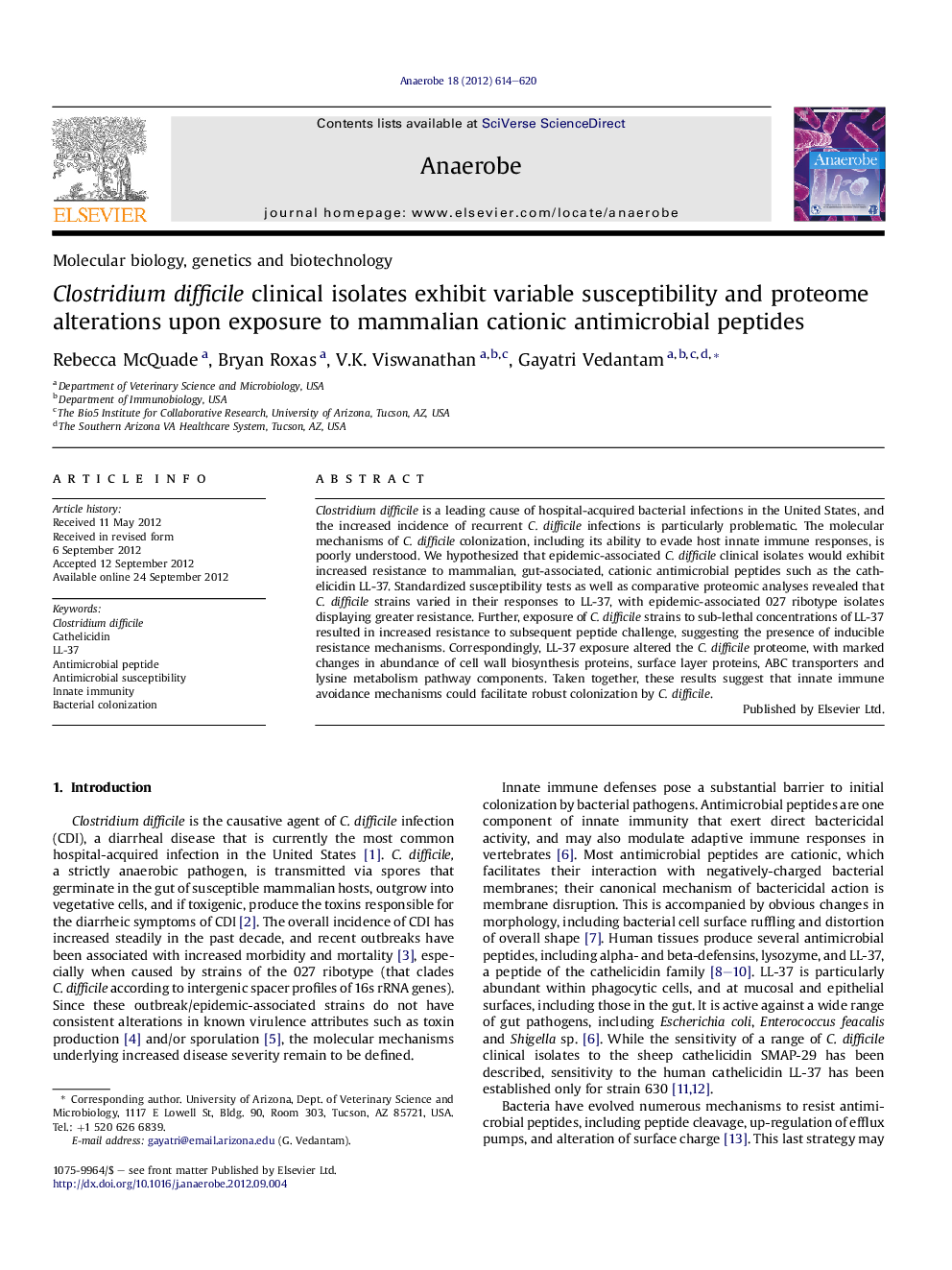| Article ID | Journal | Published Year | Pages | File Type |
|---|---|---|---|---|
| 3395302 | Anaerobe | 2012 | 7 Pages |
Clostridium difficile is a leading cause of hospital-acquired bacterial infections in the United States, and the increased incidence of recurrent C. difficile infections is particularly problematic. The molecular mechanisms of C. difficile colonization, including its ability to evade host innate immune responses, is poorly understood. We hypothesized that epidemic-associated C. difficile clinical isolates would exhibit increased resistance to mammalian, gut-associated, cationic antimicrobial peptides such as the cathelicidin LL-37. Standardized susceptibility tests as well as comparative proteomic analyses revealed that C. difficile strains varied in their responses to LL-37, with epidemic-associated 027 ribotype isolates displaying greater resistance. Further, exposure of C. difficile strains to sub-lethal concentrations of LL-37 resulted in increased resistance to subsequent peptide challenge, suggesting the presence of inducible resistance mechanisms. Correspondingly, LL-37 exposure altered the C. difficile proteome, with marked changes in abundance of cell wall biosynthesis proteins, surface layer proteins, ABC transporters and lysine metabolism pathway components. Taken together, these results suggest that innate immune avoidance mechanisms could facilitate robust colonization by C. difficile.
